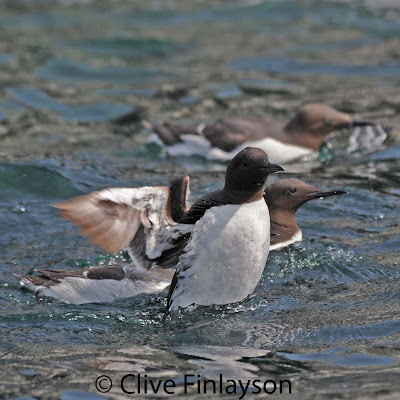the prize is brought back home
the nest is barely a smattering of vegetation so the egg is in real danger of being knocked over the narrow ledge, especially in such packed colonies. So the Guillemot's egg is conical which ensures that the egg spins on its apex and stays in the nest. The risk of loss is minimised.
with luck, the chicks hatch and a new generation comes to the world
...but the troglodyte experience is not limited to seabirds. Next we will look at a different kind of colonial rock dweller - some vultures and other birds of prey nest on inland cliffs and rock islands, and they too breed in close proximity and venture far and wide away from the colony in flocks in search of dispersed food. When we see patterns emerging among distantly related species and with apparently different behaviours we discover the inner beauty of Nature.



















































